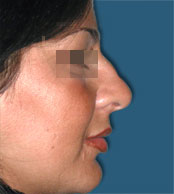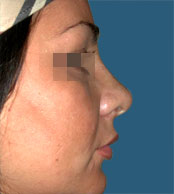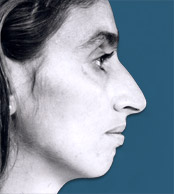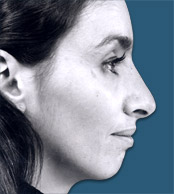|
Appearance: There are many reasons for a nose job and these are often quite subjective. Generally patients’ requests focus on several areas such as reducing or increasing the size of the nose, changing the shape of the tip or bridge, narrowing the span of the nostrils, correcting a birth defect or injury, or improving respiration.
Surgery: Rhinoplasty to modify the size or shape of the nose.
Length of the operation: Surgery can last from 45 minutes to 2 hours.
Anaesthesia: General anaesthesia or sometimes sedation with local anaesthesia
 |
 |
| Before |
After |
 |
 |
| Before |
After |
Description: The incisions are generally dissimulated inside the nostrils, especially when sculpting the point of the nose by diminishing the nostrils’ size or when removing a bump on the nose. In some cases, the nasal bones and cartilage need to be broken and reset.
When creating smaller nostrils, the surgeon will make the incisions outside, around the nostrils. In some cases, cartilage or bone transplant is required so as to correct the shape. The cartilage is taken directly from the patient.
Once surgery is finalized, a plaster will be applied to help the nose maintain its new shape. Nasal packs or soft plastic splints may also be placed inside the nostrils to stabilise the septum (the dividing wall between air passages).
Post-Operative: There is a 24 hour hospital stay. At first the patient will feel puffy, the nose may ache, and there will be swelling and bruising around the eyes and nose which will last from 8 to 10 days. It will be very difficult to breath through the nose during the first 3 days. The surgeon will administer antibiotics to prevent infection. Earliest results can be seen from 3 to 4 months after the operation, and definite results from 9 to 12 months.
Observations: Since requests for this operation are frequently made for psychological reasons, it is crucial that both patient and doctor take the time to discuss and examine all the factors involved in the patient’s decision to undertake a Rhinoplasty. Photographs should be made beforehand. The most important risk involved is that the patient may be dissatisfied after the operation and may therefore not accept the new nose.
Risks: Other risks include irregularity of the nasal bone, insufficient or excessive removal of cartilage and, although extremely rare, patients may run the risk of infection.
|